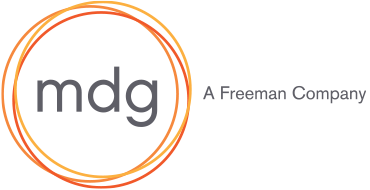
Regain Control and Maximize Engagement Amid Uncertainty
Before and after. That line of demarcation separates so much of pre- and post-pandemic life. Pre-pandemic, many of us relied on physical events as our primary source of audience engagement and revenue. Post-pandemic, we have to diversify. One method of diversification is harnessing the power of content to fill the gaps left by the pause in live events.
Find your why. Many organizations jump right into content marketing before addressing foundational strategy. Bring together cross-functional teams, including education, operations, membership and marketing, to assess your organization’s current content mix and set your goals and objectives. Will you use content to generate revenue? As a lead magnet to acquire new contacts? As part of a year-round engagement strategy? Your objectives should drive all decisions around budget, content development, and implementation.
Discover the differentiators. Who are you creating content for? What’s relevant to them? Is your main goal to retain core audiences or to attract a new audience segment? When we have a deeper understanding of a target audience’s interests, media habits, behaviors and emotional appeals, we can align our content at the various stages of the buyer journey, from awareness through conversion, to optimize performance.
Mind the gap. Start by taking inventory of your existing content and conduct a gap analysis/content ranking exercise to better understand where you’re delivering — and not delivering — against the needs of your audiences. Data, listening and performance testing also play a role here to help you determine which content is attracting interest at each stage of the buyer journey.
Review and recycle. The creation process is time-consuming, so make sure you’re getting as much mileage out of your existing content as possible. Leverage media partner content, translate compressive reports into short teasers and convert webinar or session data into infographics. Just make sure your speaker proposals and/or media agreements include language that gives you the right to repurpose and distribute content across multiple formats and platforms.
Make it about them. Get association members, past attendees or prospects involved in content creation — whether it’s through surveys, testimonials or guest blog posts from industry influencers. Make sure you’re continually monitoring how your content is resonating with your audience through performance testing, listening and a consistent review of analytics, like how much time viewers are spending on each piece of content.
Drive it home. Your audience won’t benefit from content unless it’s seen. Develop a promotional plan that outlines how your audience consumes information and the best media to reach them. For example, if your objective is to reach new audiences, you may launch a digital campaign featuring gated lead magnets. Once viewers submit their contact information, they’re dropped into a lead nurture email campaign that may include additional content and a call to action for your desired response.
Cross the finish line. Good content gets shared, but only if it’s easy. Make sure that every piece of content you publish — from listicles to podcasts — has share buttons to create viral marketing value. And while content should serve as thought leadership, you can’t forget to “close the sale” with copy that communicates benefit, creates a sense of urgency and encourages your audience to take immediate action.
A version of this article originally appeared in PCMA Convene.


